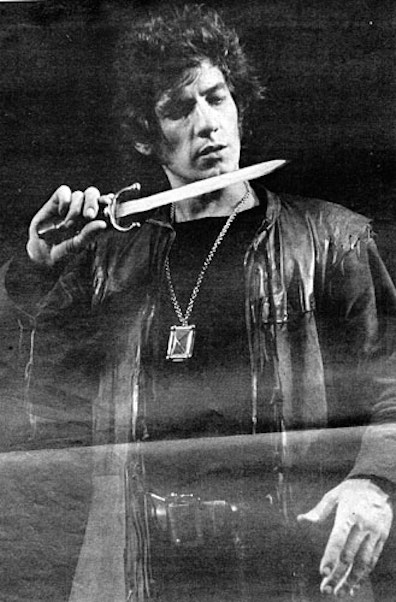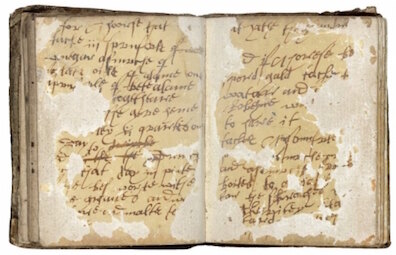Very like a whale
Very like a whale
In Brief
Phrases from Hamlet sound in Stephen's interior monologue repeatedly during Proteus––unsurprisingly, because the account of Shakespeare's life and works that he will be propounding in a few hours centers on Hamlet, and because like Hamlet he is dressed in black. Some of his recollections from this play seem to help Stephen think about his calling as an artist.
Read More
Mocking his pretentiousness as a young writer, he remembers his ambition to have his short "epiphanies" lodged in "all the great libraries of the world," where readers in the far distant future would look back in awe at the great Irish genius of the early 20th century. Even though the epiphanies make no rational sense, they will seem so "deeply deep" that readers will puzzle over their profound meanings. Into this evocation of the younger Stephen's self-adoration breaks the voice of a somewhat older and wiser Stephen, quoting Polonius: "Ay, very like a whale."
In 3.2 Hamlet toys with the overly compliant Polonius, recognizing that, like Rosencrantz and Guildenstern, he is trying to get information out of the prince by humoring him in his every mad fancy. Hamlet points to a cloud in the sky "that's almost in the shape of a camel," and Polonius readily agrees that it's camel-like. He changes his mind, deciding that it's weasel-shaped, and Polonius agrees again. "Or like a whale," Hamlet says, and Polonius agrees, "Very like a whale" (3.2.376-82). In an aside, Hamlet exclaims, "They fool me to the top of my bent" (3.2.384). Future readers of Stephen's epiphanies will be doing the same thing, making fools of themselves in the course of humoring the artist's pretense that deep meanings can be discerned in his works.
Elsewhere in Proteus, Stephen compares himself walking in black clothes along the Sandymount shore to both the young prince walking on the battlements of Elsinore to encounter his father's ghost, and the ghost itself. He is the prince when he closes his eyes at the beginning of the chapter and thinks, "If I fell over a cliff that beetles o'er his base," echoing Horatio's warning in 1.4 that the ghost may tempt Hamlet "to the dreadful summit of the cliff / That beetles o'er his base into the sea." Later he is the ghost: "So in the moon's midwatches I pace the path above the rocks, in sable silvered, hearing Elsinore's tempting flood." Horatio uses the phrase "sable silvered" in 1.2 to describe the ghost's beard when Hamlet asks him for identifying information. In Scylla and Charybdis Stephen will argue that the great playwright wrote Hamlet from the perspective of the ghost, not from that of the young prince, so this detail implies an aspiration to grow into artistic fatherhood.
Two scenes later, Hamlet and Horatio appear on the castle's guard-platform on a cold night—in "a nipping and an eager air" (1.4.2). The Ghost appears again and Hamlet resolves to follow where it leads, making Horatio fear that it may "tempt you toward the flood, my lord," either leading the young prince to fall off a cliff into the sea or assuming some terrifying shape that would drive him mad (1.4.69-78). Like prince Hamlet, Stephen encounters "nipping and eager airs" on the beach, and he is willing to brave the "tempting flood," skirting the element of water that so terrifies him in order to play, Proteus-like, with the shifting shapes that the sea evokes in his mind.
When Stephen hunts about for some paper to record his fragment of a poem, he thinks, " My tablets," echoing the prince after he speaks with the ghost: "My tables—meet it is I set it down / That one may smile, and smile, and be a villain" (1.5.107-8). The reference is to small tablet books that Elizabethans carried about with them to record their thoughts when they were on the move and could not use a quill pen. Made of wax-coated vellum or cardboard, they could be inscribed with a metal stylus and then erased with a sponge.

